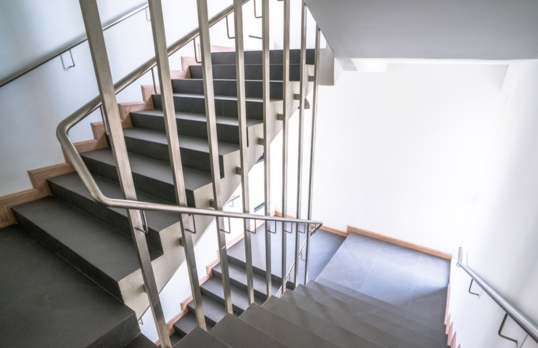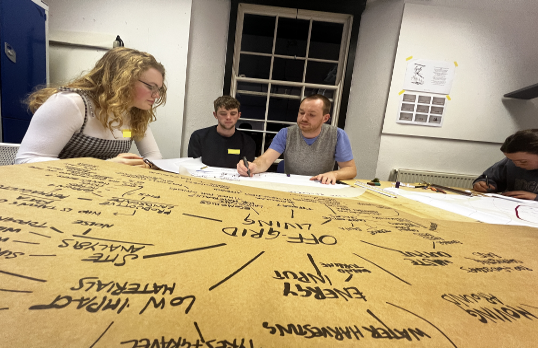In February 2021 the RIBA Future Trends Workload Index increased by 14 points to +17, a level of confidence not seen from architects since early 2020.
Nearly a third (32%) of practices expect workloads to grow in the next three months, up from 28% (in January), whilst just over half (52%) expect them to remain the same. The number of practices expecting workloads to decrease has also fallen from 25% to 16%.
Optimism has been driven by the housing sector, which surged by 20 points this month to a balance figure of +29. Whilst it remains the only sector in positive territory, all other sectors saw a rise. The commercial sector saw the highest, up 16 points to a balance figure of -2; the public sector rose 2 points to -1; and even though the community sector posted the lowest at -6, this marks an improvement on the previous month’s figure of -15.
In February, the outlook of small practices (1 - 10 staff) rose significantly, posting a balance figure of +13, up fifteen points from January’s figure of -2. Confidence among large and medium sized practices (11 - 50 and 51+ staff) also remains strong, with an overall balance score of +29. Among these groups, 35% expect workloads to increase, and just 6% foresee a decrease.
All regions, except London, expect an increase in workloads in the near-term. Having briefly entered positive territory the previous month, London posted a negative figure of -3.
This month’s survey also asked respondents how they felt about the future of the workplace. Overall, results indicate that once a return to the office is possible, there is currently no appetite to resume pre-pandemic work patterns. Only 13% of practices expect to recall everyone to the office; almost a quarter (26%) see the future being a blend of office and home-based work; 20% look to leave the decision to staff; and 41% said they will continue to work as they are now (though how people work now is varied, with some practices already including an element of office-based working, when government restrictions allow, whilst others are fully remote).
In terms of staffing:
- The RIBA Future Trends Staffing Index remained at +4 this month. It has been consistently, though only slightly, positive since October.
- 6% of practices expect to employ fewer permanent staff in the coming three months, while 11% expect to employ more. A clear majority (83%) of practices expect staffing levels to be constant over the coming three months.
- Medium and large-sized practices (11+ staff) continue to be most likely to recruit permanent staff in the coming three months, with both groups posting strongly positive figures.
- On balance, small practices (1 - 10 staff) expect staffing levels to be steady, with a balance figure of +1.
- The Temporary Staffing Index returned a balance figure of +1, suggesting the market for temporary staff is positive, but only by a small margin.
- London remains most likely to anticipate decreased numbers of permanent staff in the next three months, with a staffing balance figure of -8; down four points on last month. The South of England also remains cautious about upcoming recruitment, with a balance figure of zero.
- Future recruitment is more likely outside of London and the South: the Midlands & East Anglia returned a figure of +6, the North of England +10, and Wales & The West at +21.
- Personal underemployment fell slightly at 20%, down from 22% in January.
- Staffing levels remain at 96% of what they were twelve months ago. Overall, redundancies stand at 3% of staff; 7% remain on furlough and 16% are working fewer hours.
RIBA Head of Economic Research and Analysis, Adrian Malleson, said:
“As the route out of the pandemic becomes clearer, not least due to the roll-out of the vaccination programme, February’s figures demonstrate a turning point – practices are starting to feel more optimistic about the future.
It’s clear however, that this increased confidence is partly dependent on the residential sector, fuelled by homeowners relocating or adjusting their homes to accommodate remote working, and question marks remain over the sustainability of this trend. Furthermore, practices who are reliant on work outside of this sector are yet to see their workloads increase.
Whilst the data suggests there is not currently a significant appetite to return to pre-pandemic work patterns, we also know that homeworking continues to create productivity challenges, not least because childcare and home-schooling have been impacting the working day. Commentary received from our respondents indicates that this is disproportionately impacting women.
We continue to be on hand, providing support and resources to our members as they navigate these challenging times.”
ENDS
Notes to editors:
- For further press information contact Isabel.Campbell@riba.org +44 (0) 207 5805 5533
- Completed by a mix of small, medium and large firms based on a geographically representative sample, the RIBA Future Trends Survey was launched in January 2009 to monitor business and employment trends affecting the architects’ profession.
- The survey is carried out by the RIBA in partnership with the Fees Bureau. Results of the survey, including a full graphical analysis, are published each month here.
- The definition for the workload balance figure is the difference between those expecting more work and those expecting less. A negative figure means more respondents expect less work than those expecting more work. This figure is used to represent the RIBA Future Trends workload index.
- The definition for the staffing balance figure is the difference between those expecting to employ more permanent staff in the next three months and those expecting to employ fewer. A negative figure means more respondents expect to employ fewer permanent staff. This figure is used to represent the RIBA Future Trends staffing index.
- To participate in the RIBA Future Trends Survey, please contact the RIBA Practice Department on 020 7307 3749 or email practice@riba.org. The survey takes approximately five minutes to complete each month, and all returns are independently processed in strict confidence.
- Visit the RIBA COVID-19 hub for guidance on the COVID-19 outbreak.
- The Royal Institute of British Architects (RIBA) is a global professional membership body that serves its members and society in order to deliver better buildings and places, stronger communities and a sustainable environment. Follow @RIBA on Twitter for regular updates.









